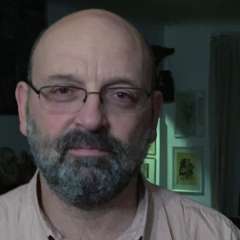For many years, Shostakovich’s quartets have been part of the Emerson String Quartet’s core repertoire. Their numerous renditions have significantly contributed to the quartets’ popularity. Years ago, Philip Setzer, one of the Emerson Quartet’s violinists thought of presenting all fifteen quartets – the most personal of all the composer’s musical statements – in a theatrical treatment.
In 2000, the Emersons were the protagonists of The Noise of Time, a true Gesamtkunstwerk conceived by Simon McBurney and members of his Complicité troupe. The performance combined an extraordinary kaleidoscope of images from Shostakovich’s life and time and a full performance of his Op.144, considered by many to be a requiem he composed for himself. Marked by McBurney’s preoccupation with the way we perceive and comprehend music and sounds, the performance made the audience listen to Shostakovich’s music from a fresh perspective. About two decades later, the experiment continues. Co-commissioned by Great Lakes Chamber Music Festival, Princeton University Concerts and Tanglewood Music Festival, Shostakovich and the Black Monk – A Russian Fantasy features the String Quartet no. 14, Op.142. If McBurney’s creation was enlightening, airy and succulent, this one, written and directed by James Glossman, is heavy-handed and dull.
The starting point for the new endeavor was Shostakovich’s presumed intention to create an opera based on Chekhov’s short story, The Black Monk. The authors believe that the opera was never composed because of Shostakovich’s lingering fears of punishment and imprisonment after his initially very successful Lady Macbeth of Mtsensk was stigmatized in the newspaper Pravda as “bourgeois formalism”. The front-page editorial marked Shostakovich’s life. He composed large scale public statements of contrition, with occasional subversive hints, and he used chamber music as a receptacle for his more intimate thoughts. Shostakovich never dared write another opera, not even after Stalin’s death. But one can hear, according to Setzer and Glossman, inklings of the composer’s continuous fascination with The Black Monk in the Quartet no. 14: a “portrait” of the monk himself; a reference, in the slow movement, to the Italian composer Gaetano Braga’s Angel’s Serenade that someone sings in the 1893 story.
This Russian Fantasy is presented as a materialization of Shostakovich’s thoughts. David Strathairn, playing the composer, talks about his obsession with Chekov’s story, his imaginary discussions with Stalin (Jay O. Sanders), and his three wives… This combination between play and recital tries to suggest an equivalence between the complicated relationship that the composer had with Stalin and the Soviet regime, on one side, and the on-and-off bond between Andrey Kovrin, the main character in Chekhov’s opus, and the devilish vision that is haunting him on the other. It’s all about the origins of creativity, what stimulates it and what stifles it.
If the Russian Fantasy scenario is certainly interesting, provided that the audience is not overwhelmed by the details, the mise en scène seemed awkward, the actors lacking subtlety. Many times, they just shouted and gesticulated in wobbly and uncoordinated unisons. Repetitive, background projected images – documents, river banks, menacing clouds – were devoid of any metaphysics. Most of the evening was devoted to rendering an oversimplified version of Chekov’s story with fragments of Shostakovich’s music accompanying dialogue. But the text is much more than a list of “facts” about a young scholar coming back to his roots in the countryside, getting married, divorced, and becoming more and more mentally ill. It’s about inspiration, personal sacrifice, mediocrity and genius, posterity…
Composed in 1972-1973, Shostakovich’s Fourteenth Quartet, is one of four dedicated to the original members of the Beethoven String Quartet. In this least somber of the late quartets, the cello is the dominant voice, with music including cryptic references to cellist Sergey Petrovich Shirinsky, its dedicatee. One of them, beautifully played by Paul Watkins, quotes an aria from Lady Macbeth in which Katarina is expressing her love for Sergey.
The Emersons’ interpretation, with Eugene Drucker at the first violin desk and Philip Setzer at the second, was technically immaculate but devoid of a certain “Russian” warmth. The audience didn’t have the chance to focus on listening to the music. Shostakovich conceived his opus as a whole entity. He intended no pause between the second and third movements. Presenting the three parts separately during this event, with the music just being, at times, an accompaniment to the text was not the composer’s intention. Shostakovich wrote “illustrative” scores for theater and film but those had a totally different character and structure. If the intention of the evening’s creative forces was to shed additional light on one of Shostakovich’s lesser known quartets, the results were doubtful. Any additional contextual information the audience gathered about his quartet did not compensate for the losses. However, any attempt to integrate music and theater, providing new interdisciplinary perspectives, is still meritorious and commendable.




